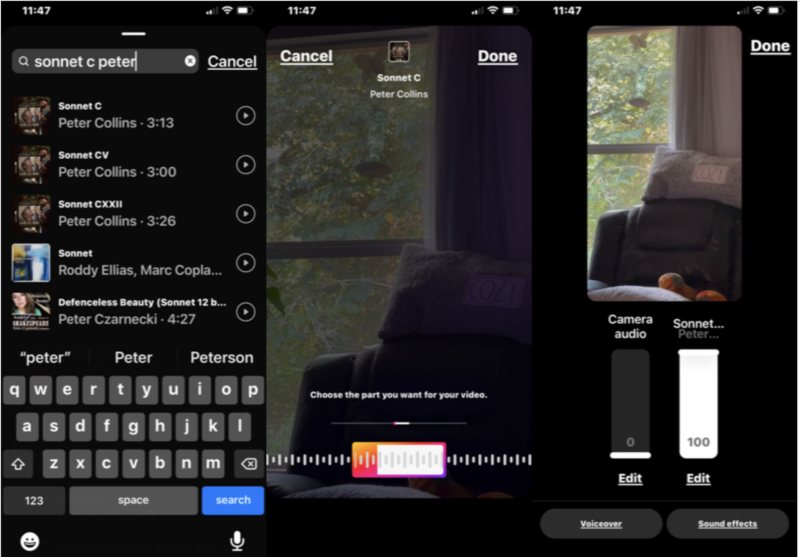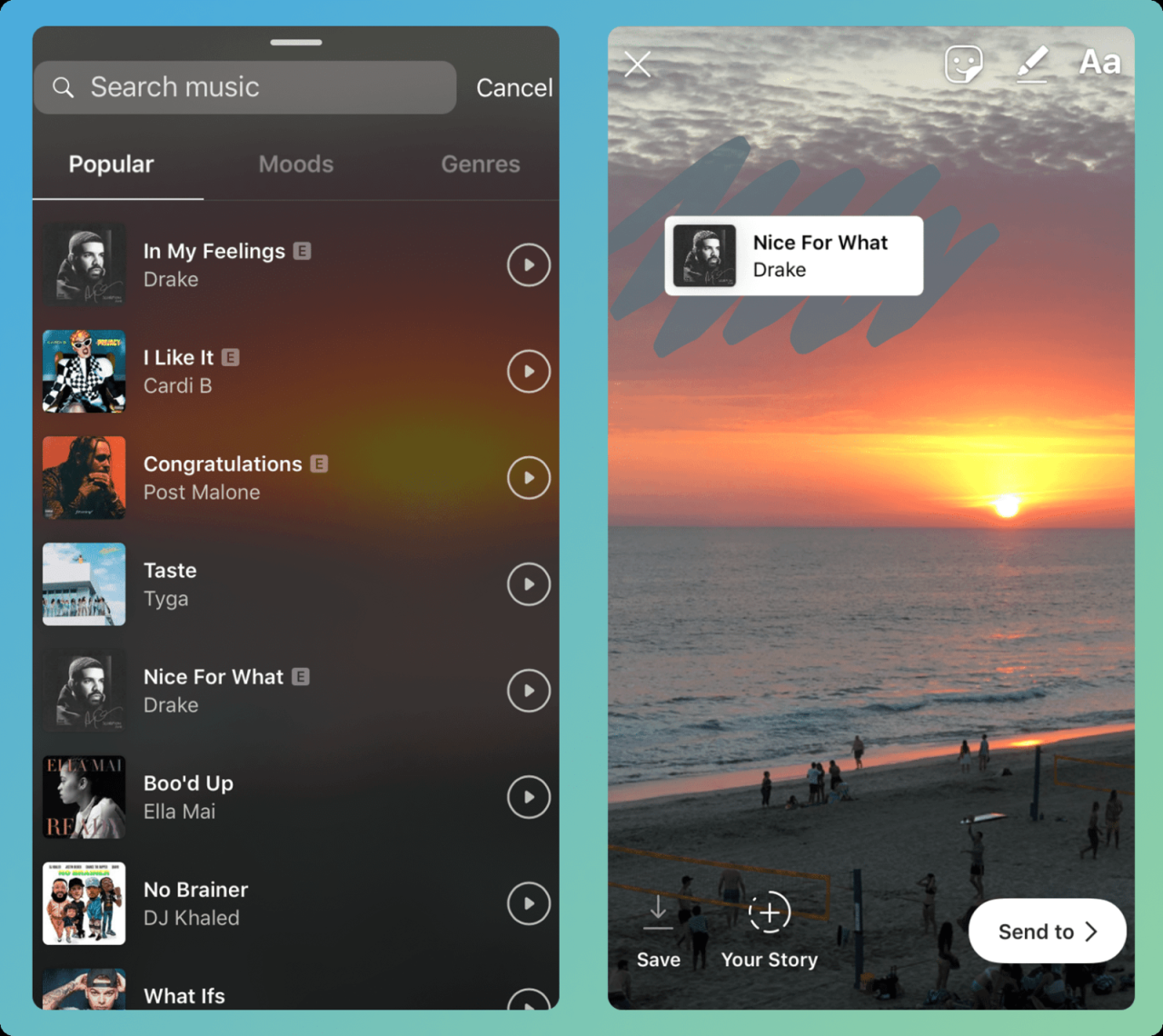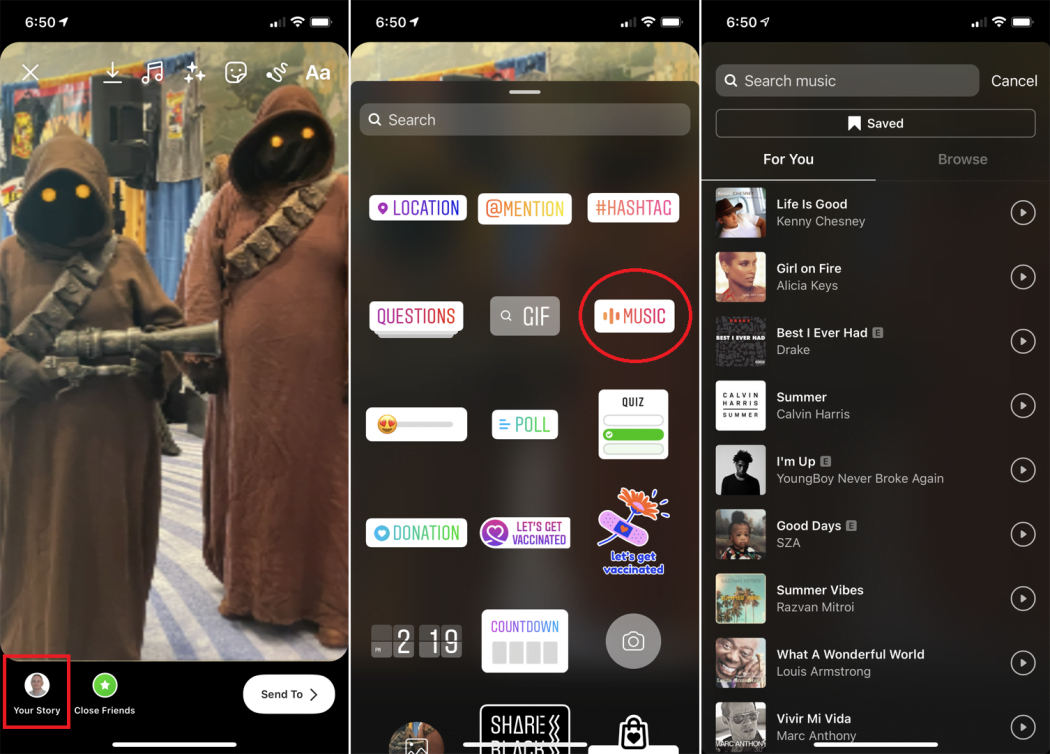Can Instagram business accounts use music? The answer is a resounding yes, but with important caveats. Navigating the complex world of music licensing is crucial for businesses wanting to leverage the power of audio in their marketing. This guide unravels the legal landscape, explores various licensing options, and offers practical strategies for incorporating music into your Instagram content without facing copyright infringement.
From understanding the differences between royalty-free and licensed music to mastering the art of integrating sound into Reels and Stories, we’ll equip you with the knowledge to create engaging content that resonates with your audience. We’ll also delve into how music impacts Instagram’s algorithm, influencing your reach and engagement. Ultimately, this guide aims to empower you to use music effectively and legally to amplify your brand’s presence on Instagram.
Instagram Music Licensing for Business Accounts

Using music in your Instagram business posts can significantly enhance engagement and brand appeal. However, understanding the legal landscape of music licensing is crucial to avoid copyright infringement and potential legal repercussions. This section details the various licensing options available, their associated costs and benefits, and where to source legally licensed music.
Instagram Music Licensing Options
Instagram business accounts have several options for legally incorporating music into their content. These range from using Instagram’s built-in music library (subject to its terms of service) to securing licenses directly from music publishers or utilizing royalty-free music platforms. Each option carries different levels of cost, usage rights, and ease of access. Choosing the right option depends heavily on your budget, the scope of your intended use, and your technical capabilities.
Legal Implications of Using Unlicensed Music
Using music without proper licensing on Instagram business posts carries significant legal risks. Copyright infringement can lead to copyright strikes on your account, potentially resulting in content removal, account suspension, or even legal action from the copyright holder. This can severely damage your brand’s reputation and hinder your business growth. The penalties can range from hefty fines to the need to cease and desist using the copyrighted material. In short, it’s crucial to always obtain the necessary licenses before using any music in your commercial Instagram content.
Licensed Music vs. Royalty-Free Music: A Comparison
Licensed music and royalty-free music offer different advantages and disadvantages. Licensed music, often obtained through music libraries or directly from artists/labels, provides higher-quality tracks and often comes with broader usage rights. However, it usually involves higher costs, potentially requiring one-time purchase fees or ongoing royalty payments. Royalty-free music, on the other hand, typically involves a one-time purchase fee for a perpetual license, offering a cost-effective solution for smaller businesses. The quality can vary, and usage rights might be more restrictive than those of licensed music. The key difference lies in the ownership and usage rights: licensed music grants usage rights, while royalty-free music grants a license to use, but the copyright remains with the creator.
Platforms for Legally Licensed Music
Several platforms offer legally licensed music for commercial use on Instagram. These platforms provide a variety of genres and styles, often with tools to filter music based on specific criteria like mood, tempo, and genre. Some popular examples include Epidemic Sound, Artlist.io, AudioJungle (Envato Elements), and PremiumBeat. Each platform has its own licensing model, pricing structure, and terms of service, so it’s important to review these carefully before selecting a provider. These platforms often provide clear licensing agreements, ensuring compliance with copyright laws.
Comparison of Music Licensing Options
| Licensing Option | Cost | Usage Rights | Ease of Access |
|---|---|---|---|
| Instagram’s Music Library | Often free (subject to Instagram’s terms) | Limited to the music available in the library; usage rights are governed by Instagram’s terms. | Very easy; integrated directly into the Instagram app. |
| Royalty-Free Music Platforms (e.g., Epidemic Sound) | Variable, typically subscription-based or one-time purchase per track | Usually broad commercial use rights, but always check the license agreement. | Easy; online platforms with user-friendly interfaces. |
| Direct Licensing from Music Publishers/Artists | Highly variable, can be expensive depending on the artist and track | Highly customizable; rights are negotiated directly. | More complex; requires direct negotiation and legal agreements. |
Using Music in Instagram Reels and Stories for Business

Instagram Reels and Stories offer powerful tools for businesses to connect with their audience, and strategically incorporating music significantly enhances engagement. By understanding the platform’s features and employing best practices, businesses can leverage audio to create memorable and shareable content, ultimately driving brand awareness and boosting sales.
Instagram’s Music Features for Reels and Stories
Instagram provides a robust library of licensed music directly within its Reels and Stories creation tools. Users can browse a vast catalog of songs, sound effects, and trending audio clips, categorized by genre, mood, and popularity. The platform simplifies the process of adding music, making it easily accessible to all users, regardless of their technical expertise. The selection constantly updates, reflecting current trends and ensuring a diverse range of options. Furthermore, Instagram’s built-in editing tools allow for precise control over music placement, enabling users to sync audio with video seamlessly. This intuitive interface eliminates the need for external audio editing software for many basic applications.
Best Practices for Enhancing Brand Engagement with Music
Effective music selection goes beyond simply adding a background track; it’s about aligning the audio with the brand’s personality and the message conveyed in the visual content. Using music that complements the mood and tone of the video is crucial. For example, upbeat, energetic music works well for showcasing product launches or highlighting exciting company news, while calming, atmospheric music can be more appropriate for showcasing lifestyle brands or highlighting the quality and craftsmanship of a product. Consider the target audience: what kind of music resonates with them? Consistency in musical style across Reels and Stories builds brand recognition and strengthens audience connection. Short, memorable musical snippets are often more effective than long tracks, especially for shorter-form content like Reels.
Effective Music Choices for Different Business Niches
The optimal type of music varies significantly depending on the business niche. For example, a fitness brand might use high-energy electronic music or motivational pop anthems, while a spa or wellness brand might opt for calming ambient music or nature sounds. A fashion brand might use trending pop songs or sophisticated jazz depending on the brand’s aesthetic. A food brand could use upbeat, playful music for showcasing recipes or quirky sound effects to enhance the visual appeal of food preparation. The key is to select music that authentically represents the brand’s image and resonates with its target demographic.
Examples of Successful Business Accounts Using Music Strategically
Many successful businesses utilize music effectively on Instagram. Consider a hypothetical example: a sustainable clothing brand might use acoustic folk music in their Reels showcasing their ethically sourced materials and environmentally friendly production processes. This choice reflects their brand values and appeals to their environmentally conscious target audience. Another example could be a coffee shop using jazzy background music in Stories showcasing their daily specials or the atmosphere of their café. This creates a mood that encourages customers to visit. These examples illustrate how carefully chosen music enhances the overall brand experience and narrative.
Step-by-Step Guide to Legally Adding Music to an Instagram Reel
Adding music legally to Instagram Reels involves using the platform’s built-in music library. This library contains music licensed for use on Instagram, eliminating copyright concerns.
- Open the Instagram app and navigate to the Reels creation tool. This is usually found by tapping the “+” icon at the bottom of the screen.
- Record or upload your video. Ensure the video aligns with the music you plan to use.
- Select the “Audio” option. This is typically found in the editing tools after recording or uploading your video.
- Browse the Instagram music library. Search for a track that complements your video and brand.
- Select your chosen music and adjust the timing. Use the editing tools to precisely sync the music with your video.
- Preview your Reel. Ensure the music enhances the video’s impact.
- Post your Reel. Once satisfied, publish your Reel to your Instagram profile.
Using Instagram’s built-in music library ensures compliance with copyright laws, protecting your account from potential infringement issues.
Music and Instagram’s Algorithm
Instagram’s algorithm, a complex system prioritizing engagement and relevance, is significantly influenced by the use of music in business posts. Strategic music selection can boost visibility, driving organic reach and fostering deeper audience connections. Conversely, poor choices can hinder performance, limiting the potential impact of carefully crafted content.
Music’s impact on post visibility is multifaceted. The algorithm favors content that elicits high engagement – likes, comments, shares, and saves. Music, particularly trending audio, can act as a powerful catalyst for these interactions, increasing the likelihood of a post appearing higher in users’ feeds. This heightened visibility translates to increased brand awareness and reach.
Music Choice and Audience Engagement Metrics
The type of music used directly correlates with the level of engagement a post receives. Upbeat, popular tracks often attract broader audiences, leading to higher like counts and shares. However, niche genres might foster deeper engagement with a more targeted demographic, resulting in more meaningful comments and interactions. For example, a business targeting a younger, Gen Z audience might see higher engagement with trending TikTok sounds, whereas a luxury brand might find more success with sophisticated, less trendy background music that aligns with their brand image. Data analysis of post performance, including reach, engagement rate, and audience demographics, provides insights into which music choices are most effective for a specific brand.
Factors Determining Music Resonance with Target Audiences
Several factors influence the effectiveness of music choices. These include genre, tempo, mood, and cultural relevance. A brand’s target audience demographics, lifestyle, and values significantly impact the type of music that will resonate. For instance, a fitness brand might use energetic, motivational music, while a spa might opt for calming, ambient sounds. Understanding the cultural context is crucial; music considered trendy in one region might be irrelevant or even offensive in another. Careful consideration of these factors ensures that the music complements the brand message and appeals to the intended audience.
Trending Music vs. Original Compositions
The decision to use trending music or original compositions hinges on specific marketing goals. Trending audio offers immediate visibility and increased discoverability due to its pre-existing popularity. However, this approach might lack brand distinctiveness. Original compositions, on the other hand, allow for greater brand identity and memorability. They can create a unique sonic signature, strengthening brand recall and fostering a more personalized connection with the audience. The choice depends on balancing the need for immediate reach with long-term brand building. A cost-benefit analysis considering production costs, potential reach, and brand building objectives is crucial.
Visual Representation of Music Selection and Audience Interaction
Imagine a graph with “Music Selection” on the x-axis and “Audience Interaction” (measured as a composite score combining likes, comments, shares, and saves) on the y-axis. Different points on the graph represent various music choices: trending tracks would be clustered at higher points on the y-axis initially, reflecting high immediate engagement. Original compositions, initially lower, might show a slower but steadier climb as brand awareness increases, eventually potentially surpassing trending tracks in the long term. The graph would also show different clusters representing various music genres and their correlation with different audience segments, demonstrating how specific music types resonate with particular demographics. This visual representation clearly shows that while trending music provides immediate impact, well-crafted original music can lead to sustainable and stronger engagement over time.
Best Practices for Music Integration in Business Instagram Strategy: Can Instagram Business Accounts Use Music

Developing a robust music strategy for your Instagram business account requires careful planning and execution. It’s not simply about adding music; it’s about strategically integrating it to enhance your brand’s message, increase engagement, and ultimately drive results. A well-defined music strategy should be intrinsically linked to your broader marketing goals, reflecting your brand’s identity and resonating with your target audience.
Developing a Music Strategy Aligned with Marketing Goals
A successful Instagram music strategy begins with clearly defined marketing objectives. What are you trying to achieve with your Instagram presence? Are you aiming to increase brand awareness, drive sales, or build community? Your music choices should directly support these goals. For example, a brand focused on promoting relaxation might use calming ambient music, while a brand selling athletic wear might utilize upbeat, energetic tracks. The music should amplify the emotional tone and message of your content, creating a cohesive and impactful brand experience. Consider using analytics to track the performance of posts with different music choices to refine your strategy over time. For instance, if posts using a certain genre of music consistently receive higher engagement, you can prioritize that genre in future content.
Music Selection Reflecting Brand Identity and Values
The music you choose should authentically represent your brand’s personality and values. If your brand is known for its sophistication, using high-quality classical music or jazz might be appropriate. A playful brand might opt for upbeat pop or indie tracks. Consistency is key; maintain a cohesive musical style that aligns with your overall brand aesthetic. Avoid using music that clashes with your brand image, as this can confuse your audience and dilute your brand message. Licensing is also crucial; ensure you have the rights to use any music you incorporate into your content.
Music Usage Across Different Instagram Content Formats
Music can significantly enhance engagement across various Instagram formats. For Instagram posts, a short, impactful musical snippet can add emotional depth to a visually appealing image or video. Instagram Stories offer opportunities for background music to accompany short video clips or image carousels, enhancing the narrative flow. Instagram Reels, given their short-form video nature, lend themselves particularly well to music integration, allowing for creative synchronization with visuals and trending audio. Live videos can also benefit from background music to set the mood and maintain viewer engagement. For example, a cooking tutorial could use upbeat jazz, while a fashion show might incorporate a more dramatic orchestral score. Always consider the platform’s specific features and limitations when selecting music.
Integrating Music into a Broader Content Calendar
Integrating music into your content calendar ensures consistency and strengthens your brand messaging. Plan your music choices in advance, coordinating them with the overall themes and messaging of your posts. Consider creating playlists for different campaigns or seasons to maintain a cohesive brand experience. This allows for a more strategic and effective use of music across your content, reinforcing your brand identity and creating a recognizable auditory signature.
Checklist for Using Music on Instagram, Can instagram business accounts use music
Before using music on Instagram, it’s crucial to follow these steps:
- Identify your target audience and their musical preferences. Understanding your audience’s tastes will help you select music that resonates with them.
- Select music that aligns with your brand identity and values. Choose music that accurately reflects your brand’s personality and messaging.
- Obtain the necessary licenses for the music you use. Ensure you have the legal right to use the music to avoid copyright infringement.
- Experiment with different music styles and genres. Try various musical styles to see what works best for your audience and brand.
- Monitor the performance of your posts. Track engagement metrics to see how different music choices impact your results.
- Stay updated on Instagram’s music policies. Instagram’s policies regarding music usage can change, so stay informed.






